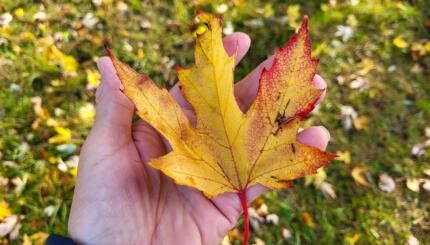That Rosh Hashanah is the Jewish new year is well known, but what is less well known is when this started.
In the Bible, the date of today’s Rosh Hashanah, the first of Tishrei, is never mentioned as a new year’s festival. Indeed, God explicitly commands that the first of Nisan, the month when Passover falls, is the new year. The lists of festivals that appear in Exodus and Deuteronomy do not mention a festival on the first of Tishrei at all. Though this date is mentioned in Leviticus and Numbers, in both these sources it is called “the first of the seventh month” and listed after Shavuot, making clear that these texts do not consider it to be the beginning of the year. The only time the term Rosh Hashanah appears in the Bible is in Ezekiel 40:1, but there it is referred to as a month, not a day. In any event, since Ezekiel later calls Nisan the first month, he probably did not mean that Rosh Hashanah is literally the beginning of the year.
How Rosh Hashanah became the Jewish new year is a bit of a mystery, but the most important clue lies in the Torah’s description of the Festival of Ingathering — i.e., Sukkot, which takes place later in Tishrei — as “the end of the year” (Exodus 23:16). Notably, this description fits with a calendar dating from the 10th century BCE that archaeologist R.A.S. Macalister found in Gezer in 1908 and which begins with the month of Ingathering. In other words, long before the Bible was written, the month in which Sukkot takes place was considered the beginning of the year.
In fact, the tradition of an autumn new year goes back even earlier. During the Bronze Age, there was a city on the coast of the Mediterranean in modern-day Syria called Ugarit where the people used to mark the new year at the beginning of autumn. This was the time when the grapes were harvested, and unsurprisingly, they would celebrate with a wine festival. Indeed, it is likely that Sukkot was once celebrated the same way.
With your help, My Jewish Learning can provide endless opportunities for learning, connection and discovery.
The name of the month in which Rosh Hashanah and Sukkot fall clinches the point. Tishrei is a Hebraization of the Babylonian name for the month Tasritu, from the Akkadian surru, meaning “beginning.” In contrast, Nisan, the month the Torah counts as the new year, comes from the Akkadian word for “first-produce.”
Here lies the key distinction between these two contenders for the first month of the year. In the ancient Near East, as today, grain is planted in the fall and harvested in the spring. What is the difference between a new year focused on the harvest and a new year focused on planting? Both endeavors require effort, but at harvest time, there is a clear relationship between effort and reward. If you work to harvest grain, you are assured to be fed. But planting carries a major unknown. If insufficient rain falls, the crops will not grow and there will be little if any food to harvest. The planting season was thus an anxious time for farmers and those who depend on them, who simply couldn’t know in advance whether the rains would come.
In the context of the sacred calendar, a springtime new year reflects a feeling of confidence. If one puts in effort, the rewards are automatic. (It’s worth noting that in the ancient Near East, spring was also the time when powerful kings went out to war, confident they would achieve both victory and booty.) But an autumn new year communicates a certain amount of angst. Of course, we will do our part and plant the crops, but our eyes must turn to the heavens in the hopes of receiving divine favor, abundant rainfall, to ensure our efforts bear fruit.
The valence of the Jewish near year reflects this. Rosh Hashanah is a time when we pray for a year of blessing, but it’s also a time when we turn to God knowing that we have limited control over the matter. We will “plant the crops” — doing our jobs, taking care of our loved ones and our health. But really, how much control do we have?
Thus, we strike a balance between effort — hishtadlut, as tradition calls it — and prayer. We repent our sins and errors, but without divine support, this is no guarantee the next year will be better than the last. We will do our best, but we know how limited we are. So we turn also to prayer in the hopes that this year’s divine decree will allow our efforts, individual and collective, to bear fruit.
This article initially appeared in My Jewish Learning’s Shabbat newsletter Recharge on October 5, 2024. To sign up to receive Recharge each week in your inbox, click here.



